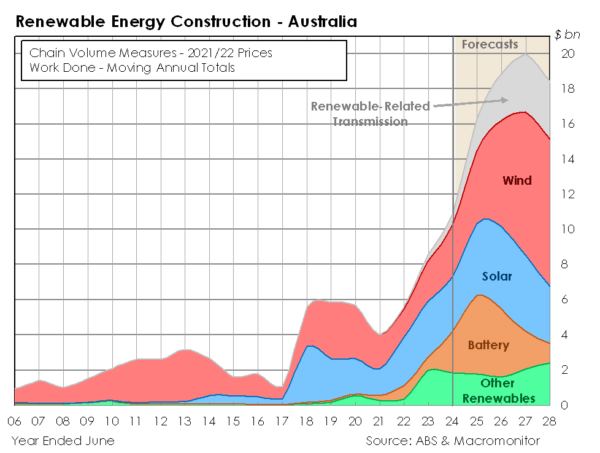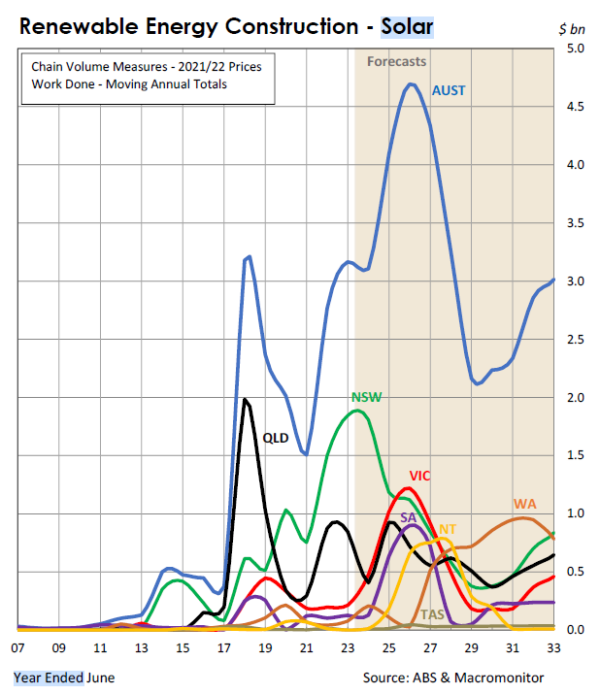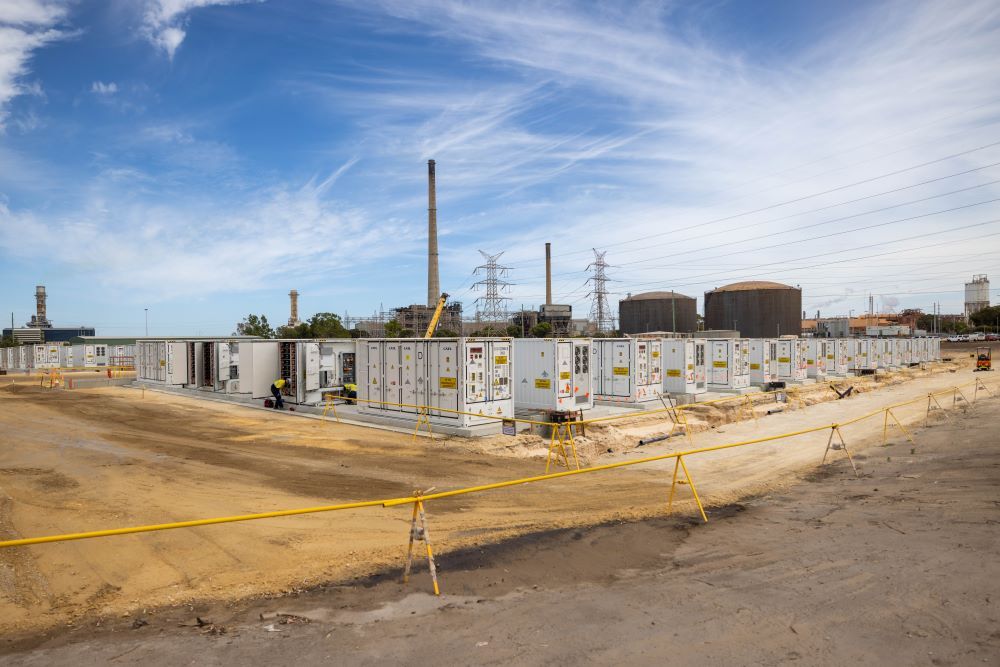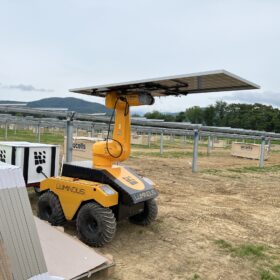Renewable energy will be the largest contributor to growth in Australia’s construction sector over the next three years, with annual activity reaching $20 billion (USD 13.3 billion) in FY2026, according to a new report from Sydney-based industry forecasting company Macromonitor.
The Renewable Energy Construction Outlook – Australia report provides detailed forecasts for renewable energy construction spending in Australia, covering all major types of renewables, including solar and battery, hydro and biomass.
It notes renewable energy construction has already increased from $4 billion in 2021 to about $10 billion in 2023, with the peak in renewable generation forecast to reach $17 billion in 2026-27, or $20 billion if directly related transmission projects are included.

Image: Macromonitor
Macromonitor economist and report author Abdul Hannan said the additional $10 billion of real increase in renewables work over the next three years will far outstrip any other segment of building and construction in Australia.
“As well as generation construction, huge investment in storage and transmission systems is also expected over the next five years, which will be the key period for Australia’s energy transition,” he said.
New South Wales (NSW) accounted for half of renewable energy construction activities during FY2022, and over the next four years represents a third of all renewable energy construction work nationwide, paving the way to a $5.2 billion surge in FY2026 as it rolls out additional renewables and energy storage to replace an estimated 8.3 GW of coal-fired generation that is set to exit the system.
Spending on solar construction is expected to peak in FY2025 at $2.7 billion, followed by a slight decline that will average out to about $2.5 billion annually in the five years to FY2032, on the back of anticipated builds such as the $5.6 billion Australian Renewable Energy Hub in Western Australia.

Image: Micromonitor
A sharp rise in spending on construction of battery storage projects is forecast for FY2032, with total value of work doubling from the year previous at $4.5 billion, then declining to $2.2 billion annually by FY2026.
Though Macromonitor forecasts an overall modest decline in spending on renewable energy construction post 2026, activities will stay at historically high levels to 2030, supported by both domestic and export-oriented projects.
While the economics of the renewable energy transition are promising, the demand for labour required to build the necessary projects is also expected to increase rapidly.
A report commissioned by the federal government suggests Australia needs 200,000 more people in clean economy jobs by 2030, or risks missing its renewable energy targets. The Jobs and Skills report also estimates that at least two million new jobs are required to meet the government’s net zero emissions by 2050 goal.
In the budget handed down last week, the federal Australian government committed $91 million over five years to help skill Australia’s clean energy workforce.
Investments include $50 million to expand clean energy training capacity across wind, solar, pumped hydro, grid battery storage, electricity networks and hydrogen, as well as key electrical and construction trades, and $30 million to turbocharge the development of teachers to train the workforce.
The government has adjusted the eligibility settings of the New Energy Apprenticeships Program so more apprentices can receive up to $10,000 to help with cost-of-living pressures.
The types of apprenticeships eligible for the $10,000 assistance package, will include designing and constructing hydroelectricity, solar and battery installations, and electric vehicle maintenance.
This content is protected by copyright and may not be reused. If you want to cooperate with us and would like to reuse some of our content, please contact: editors@pv-magazine.com.








By submitting this form you agree to pv magazine using your data for the purposes of publishing your comment.
Your personal data will only be disclosed or otherwise transmitted to third parties for the purposes of spam filtering or if this is necessary for technical maintenance of the website. Any other transfer to third parties will not take place unless this is justified on the basis of applicable data protection regulations or if pv magazine is legally obliged to do so.
You may revoke this consent at any time with effect for the future, in which case your personal data will be deleted immediately. Otherwise, your data will be deleted if pv magazine has processed your request or the purpose of data storage is fulfilled.
Further information on data privacy can be found in our Data Protection Policy.